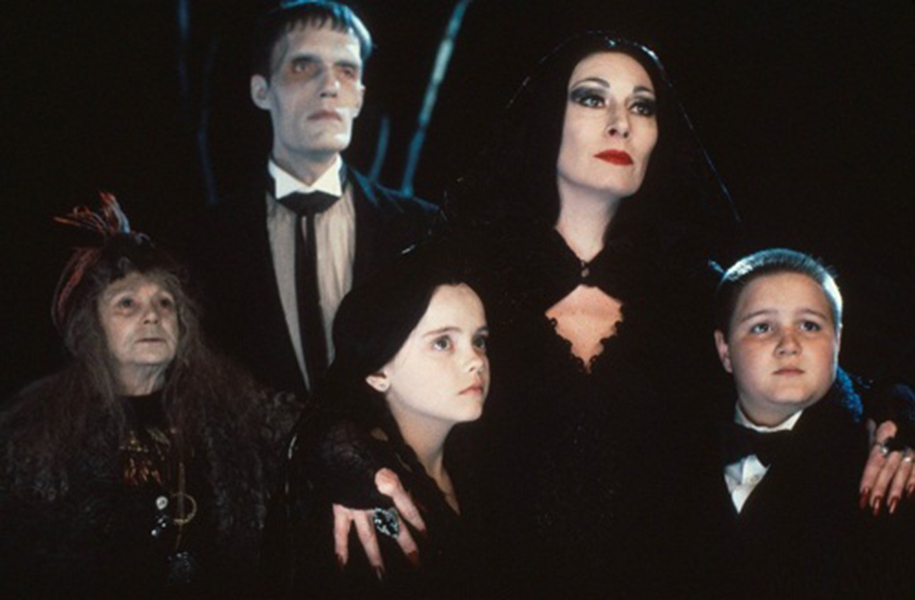The Addams Family has existed for over 80 years since appearing as a comic in The New Yorker in 1938. If you’re not familiar, the Addamses are a genuinely happy, loving family of capital-G Gothic not-quite monsters whose neighbours find them strange and disturbing. The driving concept of the show is that the Addamses, oblivious to their own weirdness, find them equally shocking. There have been several film and TV incarnations of the franchise, but I want to talk about the first — the 1964 sitcom — and how frighteningly timely it still is today.
The Addams Family is an exercise in defamiliarization and coding. In literature, “defamiliarization” refers to framing ordinary things in new ways for the purposes of analysis and criticism. “Coding” refers to how we use an audience’s cultural knowledge as shorthand. Special episodes on topics like racism or homophobia wouldn’t become common on sitcoms until several years later with shows like All in the Family, and The Addams Family doesn’t have any episodes that deal with these things directly. However, through the power of coding, xenophobia emerges as the overarching theme of the show.
The Addamses are coded as a stereotypical North American nuclear family complete with a black picket fence and a dog — er, octopus — but are seen by the “normal” characters as unintelligible strangers invading the peaceful Leave it to Beaver-esque uniformity of the suburbs. This was at the same time that black and Jewish Americans were moving into white, affluent neighbourhoods and facing the same kind of antagonism that the Addams family does throughout the series.
If the producers had wanted to simplify the show and reduce it to a series of gags, they could have invented an outsider for viewers to relate to – a character from the “real world” through which we could see the fictional world of the Addamses, and the Addamses themselves. We could have been positioned as one of their ordinary neighbours, expected to be just as shocked and appalled as they are. Instead, the audience is always in the house with the family; this means that, by watching, viewers become a member of the Addams clan. The Addamses, then, are the lens through which privileged audiences are made to look at the normal people — in other words, ourselves.
The Addams Family forces viewers to look at the Addams family as a reflection of themselves, and the others in their community. The Addamses are invariably kind and welcoming towards outsiders, so they not only beg the question “Am I as normal as I think I am?” but also, “If I am normal, am I as kind as they are? Am I as welcoming and generous, even towards people who are different from me?”
Right now, white supremacism and nationalism are gaining a stronger foothold, not just in the States as we’d like to believe but here, in Canada, in the Fraser Valley, in Abbotsford, and things that were contentious in the ‘60s – accepting immigrants and religious minorities, multiculturalism rather than assimilation — are being made contentious today. The Addams Family is as accessible, and relevant today as it was then. Outspoken racism may be becoming okay again, but even when it was okay in the ‘60s, there were pieces of media that critiqued it, and returning to these cultural artifacts can help us to step back and look at what’s happening today.


